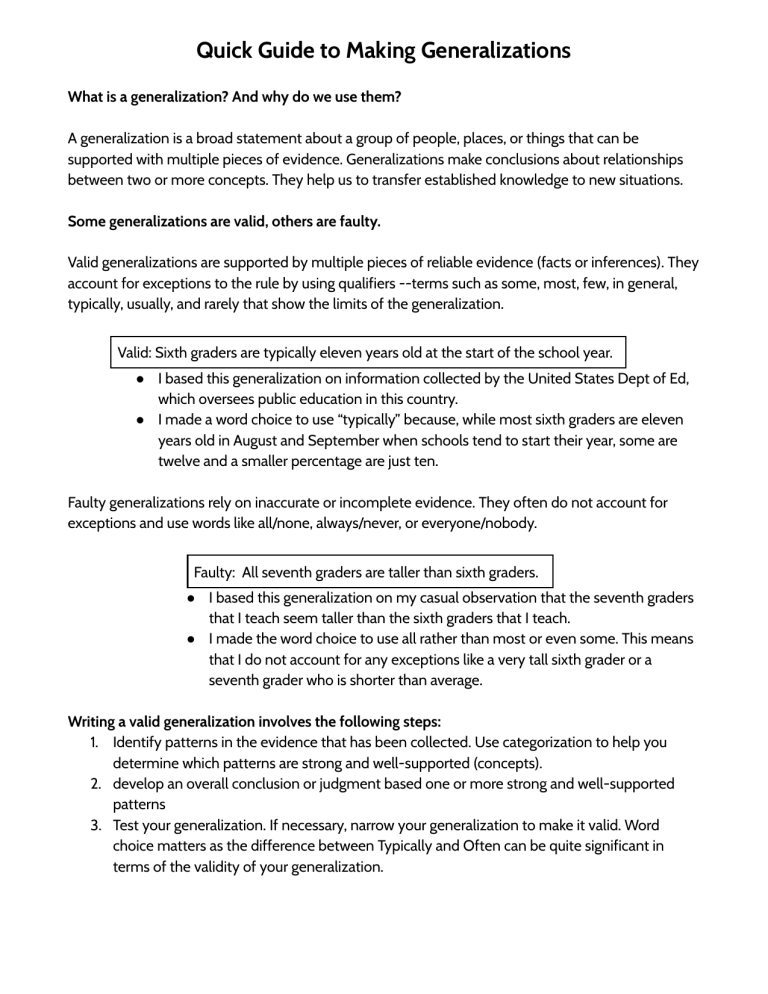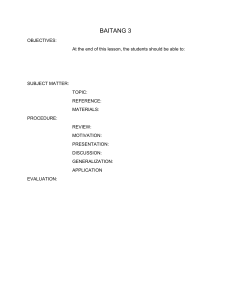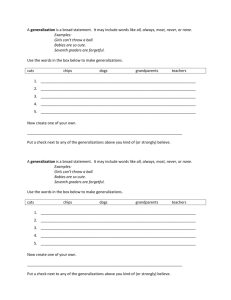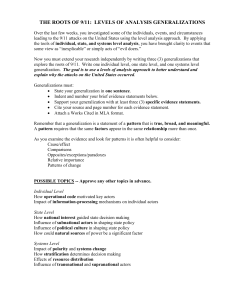
Quick Guide to Making Generalizations What is a generalization? And why do we use them? A generalization is a broad statement about a group of people, places, or things that can be supported with multiple pieces of evidence. Generalizations make conclusions about relationships between two or more concepts. They help us to transfer established knowledge to new situations. Some generalizations are valid, others are faulty. Valid generalizations are supported by multiple pieces of reliable evidence (facts or inferences). They account for exceptions to the rule by using qualifiers --terms such as some, most, few, in general, typically, usually, and rarely that show the limits of the generalization. Valid: Sixth graders are typically eleven years old at the start of the school year. ● I based this generalization on information collected by the United States Dept of Ed, which oversees public education in this country. ● I made a word choice to use “typically” because, while most sixth graders are eleven years old in August and September when schools tend to start their year, some are twelve and a smaller percentage are just ten. Faulty generalizations rely on inaccurate or incomplete evidence. They often do not account for exceptions and use words like all/none, always/never, or everyone/nobody. Faulty: All seventh graders are taller than sixth graders. ● I based this generalization on my casual observation that the seventh graders that I teach seem taller than the sixth graders that I teach. ● I made the word choice to use all rather than most or even some. This means that I do not account for any exceptions like a very tall sixth grader or a seventh grader who is shorter than average. Writing a valid generalization involves the following steps: 1. Identify patterns in the evidence that has been collected. Use categorization to help you determine which patterns are strong and well-supported (concepts). 2. develop an overall conclusion or judgment based one or more strong and well-supported patterns 3. Test your generalization. If necessary, narrow your generalization to make it valid. Word choice matters as the difference between Typically and Often can be quite significant in terms of the validity of your generalization.



